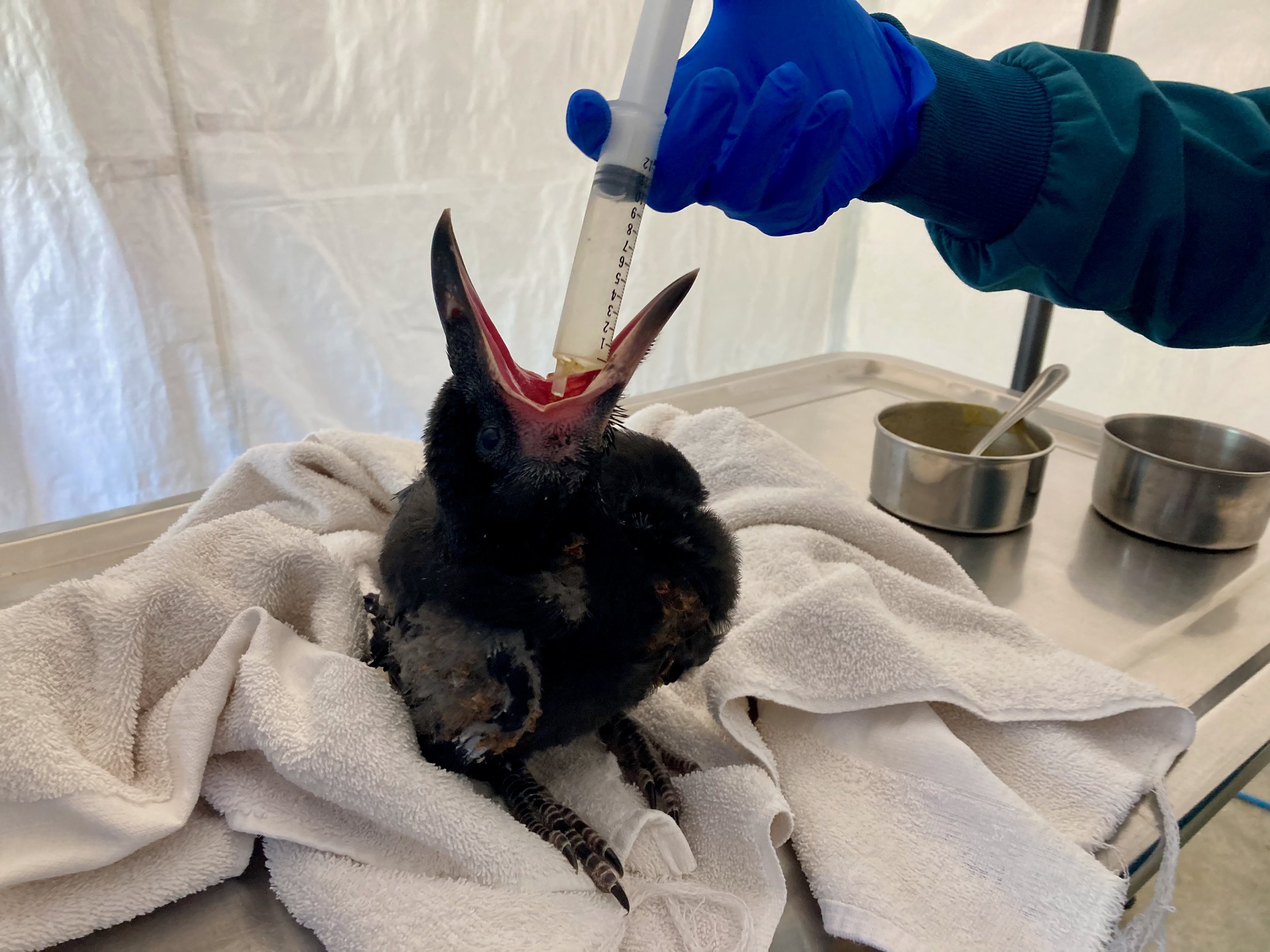Author: J.K. Ullrich, Bird TLC volunteer
Summertime turns some Alaskan birdwatchers into accidental kidnappers. “That baby bird hopping around outside must have fallen out of the nest. Maybe I should take it home…” Wait! Most “abandoned” baby birds are healthy fledglings, and human intervention can harm their development. It’s also illegal. Before attempting to “rescue” a baby bird, consider these three critical points.
1. Baby Birds Are Less Helpless Than You Think
While not all baby birds make it, nature’s support systems give them a fighting chance. Biologists classify species into two categories based on their development at birth: precocial and altricial.
Precocial birds are equipped for survival right from the egg. They hatch with their eyes open, already covered in down. Within a few hours, they can follow their parents and forage. Ducks, shorebirds, and ground-nesting birds are usually precocial.
Altricial birds start life as scrawny pink creatures, nest-bound and dependent. But their devoted parents provide everything they need. The investment pays off in larger brain size. Highly intelligent birds like corvids and parrots, as well as raptors and songbirds, raise altricial young.
Recognizing baby birds’ growth stages can help determine whether they need human help:
Hatchlings (0-3 days old) have their eyes shut, and wisps of down on their wrinkly bodies.
Nestlings (3-13 days old) have opened their eyes, but their wing feathers are still in protective sheaths.
Fledglings (13-14 days or older) are fully feathered and ready to leave the nest, although they may not be confident flyers yet. They flutter around exploring while their parents keep watch nearby.
Many chicks mistaken for orphans are actually normal fledglings. Taking them from the wild is kidnapping, and runs afoul (or more literally, a-FOWL) of federal law.
Nestling Black-capped Chickadees brought to Bird TLC’s clinic the summer of 2023.
2. Birdnapping is Illegal and Harmful
The Migratory Bird Treaty Act bans anyone except licensed wildlife rehabilitators from keeping wild birds. This discourages poaching and preserves the birds’ instincts, since raising chicks by hand “removes the opportunity for them to learn from their own species,” says Maggie McConkey, a Rehabilitation and Education Specialist at Bird TLC.
Inexperienced caretakers can inadvertently make birds ill. Without appropriate food, chicks suffer malnutrition and metabolic bone disease. Even birds that appear healthy may be at risk when released. McConkey recalls one case where a young thrush raised by a non-expert collided with an object on its first flight, breaking so many bones that it had to be euthanized.
If a baby bird does need care, it must come from trained rehabilitators. Bird TLC has received an average of 277 young birds annually over the past five years. Uninjured orphans comprise almost 20% of total patient intakes. Dedicated volunteers raise many of these foundlings. “Although we do a great job raising these babies to the best of our capability, we’re not a bird,” says McConkey. Humans should only intervene during genuine emergencies.
Maggie McConkey feeds a young Common Raven.
3. Give Nature A Chance
No matter how adorably that fledgling robin gapes at you, only its parents can teach it how to be a bird. “It’s important to remember to give nature a chance—give parents a chance to raise their young,” says McConkey. Here are some things you can do to help wild baby birds survive:
Monitor cats and dogs outdoors to prevent them hunting chicks.
Avoid trimming trees during nesting season.
Don’t disturb nesting areas.
Support preservation of wild environments.
When you observe a chick that might be in trouble, this flowchart can help you identify how to handle the situation. If you’re unsure, call Bird TLC!



